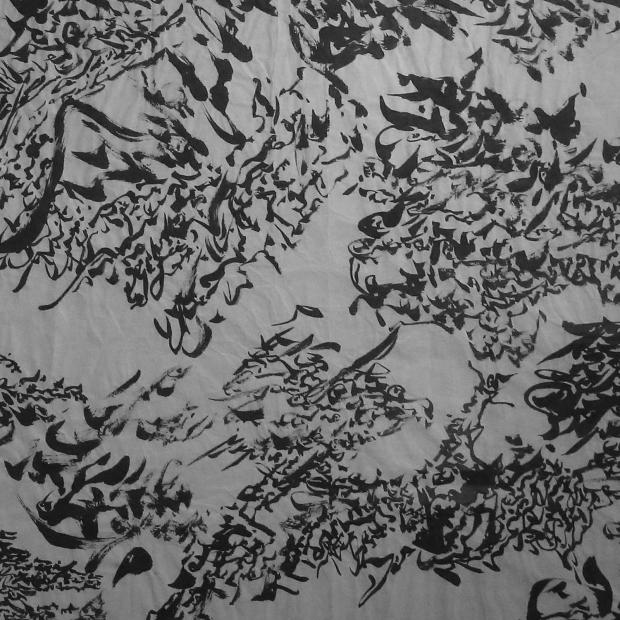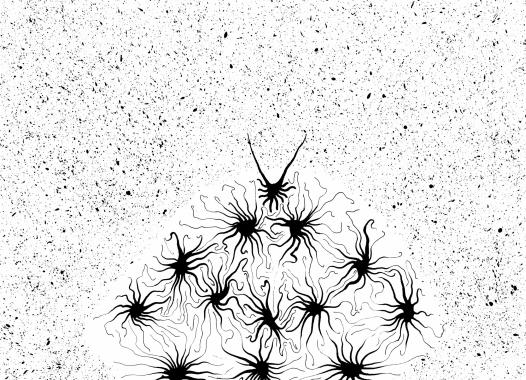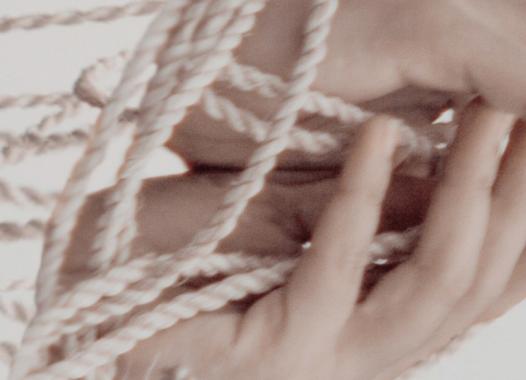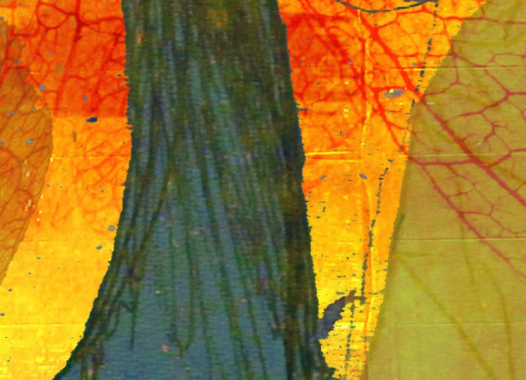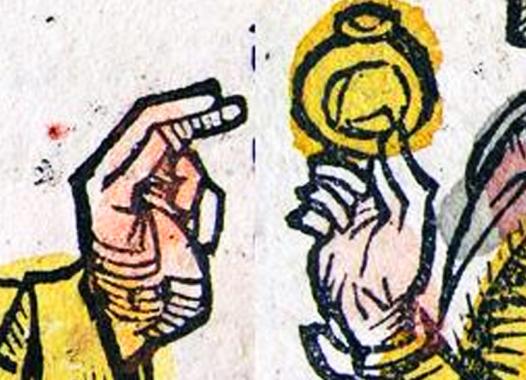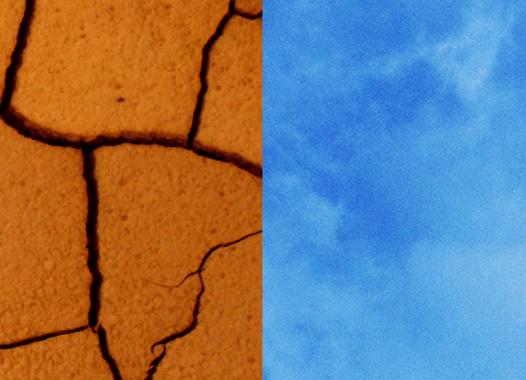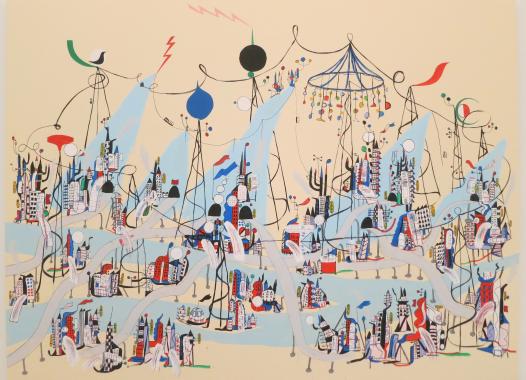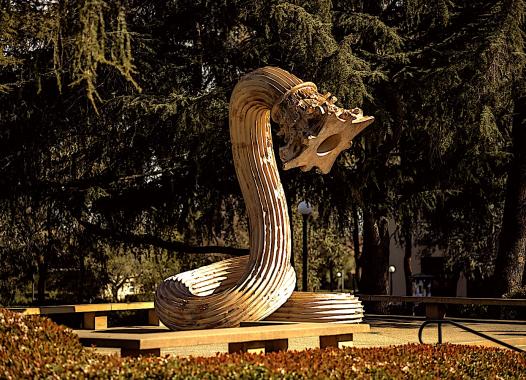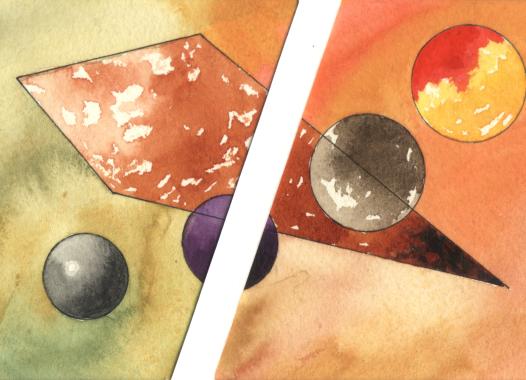
In poetry, as in life, Bernard Shaw’s expression—“The golden rule is that there are no golden rules”—still holds true, and for good reason. Poetry is born from life’s events, and life’s events do not follow any specific rule of organization, nor are life’s objects and feelings arranged according to any particular color scheme. Still, this view does not contradict the tendency to divide poetry into schools and sects such as “Classical,” “Romantic,” “Realist,” “Symbolist,” “Surrealist,” etc., which is common among many literary critics. These divisions do not, after all, represent rules; they are only judgments.
Many might agree with my opinion that Arabic poetry has yet to stand on its own two feet, after a long slumber in which bygone centuries continued to weigh heavily upon it. For the most part, we are still prisoners, held captive by the rules our forebears established in the pre-Islamic and early Islamic periods. We are still gasping for air in our poems, shackling our emotions in the chains of old meters and creaking, dead expressions. No sooner do some of us try to disobey than we are met with the resistance of a thousand jealous protectors of our language, a thousand guardians of the poetic traditions invented by one ancient man who understood what suited his time and whose invention we have since solidified and adopted as custom. It is as though language cannot be safe unless it is frozen in the state in which it existed a thousand years ago, as though poetry cannot be poetry if its metrical feet diverge from the system created by al-Khalil.[1]
Some might ask: what’s wrong with al-Khalil’s method? What’s wrong with the language our ancestors have used for centuries? The response to these questions is beyond the scope of a short introduction to a poetry collection such as this. What’s wrong with al-Khalil’s method, you ask? Hasn’t it grown rusty from the palpations of so many pens and lips over the years? Haven’t our ears grown so accustomed to it, our lips so constantly repeated it, and our pens so thoroughly gnawed at it that they’ve finally spit it out in the end? For centuries, we’ve been describing our emotions using the same style, and now that style no longer has any taste or color. Life has changed; images, colors, and feelings have been turned on their heads, and despite this fact our poetry is still variations on qifa nabki and banat suʿad.[2] If the meters remain, and the rhymes remain, won’t the general idea be the same as well?
Some might ask: what is language? Why is it necessary to give it new horizons? They forget that if language doesn’t keep pace with life, it dies. The reality is that the Arabic language does not yet possess the life-giving strength required to confront the cyclones of fear and fire that fill our souls today. It was once an inspiring language: laughing, weeping, blowing like a storm, moving our hearts. Then generations of specialists embalmed and petrified its expressions, turning them into readymade facsimiles which they distributed to writers and poets without realizing that one poet can do for language what a thousand grammarians and linguists together could never do. The poet, with his sharpened sensibilities and careful linguistic ear, can stretch words to accommodate new and unheard-of meanings. Driven by his artistic sensibility, he might tear up a given rule, not to do harm to language, but to urge it forward. The poet or man of letters, then, is the one in whose hands language develops. As for the grammarian and the linguist, they have nothing to do with it. The grammarian and the linguist have one important duty: to notice things, and to extract general rules from the writers and poets with the sharpest sensibilities.
The man of letters whose sensibilities we will agree to call “sharp,” however, must have a deep cultural education whose roots extend to the innermost core of his native literature, ancient and modern alike, and to some familiarity with the literature of at least one foreign country as well. This education should instill in him such a strong linguistic sensibility that everything he creates will be beautiful and exalted. Whenever he tears up a rule, adds new color to a word, or creates a new expression, we feel it is the best possible innovation, and we begin to treat it as a new “golden rule.”
But the sharp litterateur’s occupation will not be limited to breaking a rule here and adding new meaning there. He will have a more specific responsibility than this—one which the nature of living human languages will impose upon him. He will have to insert a key change into the literary dictionary of his era. He will have to disregard many of the words used in past centuries and create in their place new words that have never been used before,[3] because words grow old in the same way that everything touched by the fingers of use in this ever-changing life grows old. As the years pass, words can take on hardness through repetition and gradually lose their many-branching meanings. They come to have single, fixed meanings that paralyze the writer’s feelings and inhibit his freedom of expression.
There is another important justification for this attempt to distance ourselves from frequently used words and expressions: the human ear is bored by familiar images and repeated sounds. Such repetition can strip words of their vitality and their multiple meanings. For example, we Arab poets now naturally avoid words such as “amber,” “camphor,” “benzoil branch,” “crescent moon,” “lovelocks,” “oud,” “narcissus,” “pearls.” These are words that, in previous eras, seemed refined and poetic. Perhaps at the time they were only used by the most innovative poets.
Throughout my study of contemporary literatures, however, I’ve noticed the following curious thing: that we, in this era, have forgotten the specialized lexical meaning of the word badr (full moon), almost disregarding it completely. In its place, we use the word qamar (moon), and very few contemporary poets use the word badr except in rare instances. I confess that I myself sometimes go to great pains not to use badr, and there is a psychological explanation for this: my peers and I doubtless remember dozens of tone-deaf, distasteful verses left to us by the poets of a bygone era who used the word badr so much they stripped it of its beauty, extinguishing its flame and leaving behind little more than their own shadows.
Perhaps this is what psychologists call “association” (and perhaps they have a different explanation for it),[4] and it has nothing to do with the reality of the situation. The important thing is that words rust and erode; they need to be replaced from time to time. And we have seen that this process of exchanging and replacing is the work of the writer, who carries it out while he is “half-conscious,” because complete consciousness rarely ever yields anything of value.
***
Let’s return to meter for a moment.
In this collection of poetry, there is a simple kind of “departure” from the customary rules in poems such as “The Woman who Gathers Shadows,” “Let’s Be Friends,” “Elegy for an Unimportant Day,” “Song of the Chasm,” and others. I should say here that I do not count myself among the poets with “sharp sensibilities” about whom I spoke earlier. I simply feel that this new style of ordering al-Khalil’s metrical feet can free the poet’s wings from a thousand restraints. In what follows, I will try to lay out the particularities of this style and why it is preferable to al-Khalil’s style. The following lines belong to the meter that al-Khalil called al-mutaqarib, “the tripping,” which contains only one foot, faʿulun, repeated four times in each hemistich (eight times in each complete line):
يداك للمس النجوم
ونسج الغيوم
يداك لجمع الظلال
وتشييد يوتوبيا في الرمال
Your hands touch the stars
weave the mists
Your hands gather dark
build utopia here in the sands.[5]
Now, if I had used the style of al-Khalil, could I have expressed my ideas with such brevity and facility? Certainly not. I would have been forced to complete each line with a second hemistich, thereby fabricating meanings different from and extraneous to what I originally intended, simply to fill up space. Perhaps the first line would have gone like this:
يداك للمس النجوم الوضاء ونسج الغمائم ملء السماء
Your hands touch the stars shining bright
and weave fabric from clouds in the sky
The two-hemistich line does criminal injustice to the original image. Observe how we added the adjective “bright” (al-wadaʾ) to “stars” without any reason dictated by the meaning, but simply to fill out the first hemistich with its requisite four feet. See also how we replaced the expressive word “mists” (ghuyum) with the heavy synonym “clouds” (ghamaʾim) even though it doesn’t actually mean the same thing. Then there is this needless expression “in the sky” (malʾ al-samaʾ), which we have patched onto the image simply for the meter’s sake. Where our original intent was to create a gentle pause in the line’s music, with this expression we have actually given it crutches!
This is what happens when we work with the mutaqarib meter. If we choose the tawil (“long”) meter, however, the travesty becomes even worse. This meter elongates the crutches and widens the patches, such that the general idea of the line shrivels up and withers away:
يداك للمس النَّجْمِ أو نسج غيمة يسيِّرها الإعصار في كل مشرق
Your hands caress a star or weave a cloud,
blown round by tempests every day at dawn.[6]
The reader must notice the stupidity of the expression and the hardening of the image, as well as its distance from our first set of lines:
Your two hands touch the stars
and weave the mist
Your two hands gather dark
build utopia here in the sands.
We must also remember that this new style is not a departure from al-Khalil’s way, but rather a modification of his method, necessitated by the way ideas and styles have developed throughout the ages that separate us from al-Khalil. Al-Khalil made the pattern of the kamill or “perfect” meter run like this:
كفاي ترتعشان أين سكينتي؟ شفتاي تصطخبان أين هدوئي
(متفاعلن متفاعلن متفاعلن) (متفاعلن متفاعلن متفاعلن)
My hands are trembling, where is my stillness?
My lips are clamoring, where is my silence?
(Mutafaʿilun mutafaʿilun, mutafaʿilun
Mutafaʿilun, mutafaʿilun, mutafaʿilun)
The meter is focused on the foot mutafaʿilun, which Arab poets are used to repeating three times in every hemistich. All we will do now is play with the number of feet and their arrangement in each line, such that the poem will sometimes follow the meter and sometimes not. Take, for example, this excerpt from the poem “Walls and Shadows:”
وهناك في الأعماق شيء جامد
حجزت بلادته المساء عن النهار
شيء رهيب بارد
خلف الستار
يدعى جدار
أواه لو هدم الجدار
Something solid lurks there in the deep
and its apathy hides day from night
something frightening and cold
cloaked in veils
called a wall
how I wish it would fall
If we metered these lines, they would run as follows:
متفاعلن متفاعلن متفاعلن
متفاعلن متفاعلن متفاعلن
متفاعلن متفاعلن
متفاعلن
متفاعلن
متفاعلن متفاعلن
Some/thing /so//lid lurks/ there// in/ the/ deep// (3 rough anapests)
and/ its/ a//pa/thy /hides// day/ from/ night// (3)
some/thing/ fright//ning/ and/ cold// (2)
cloaked/ in/ veils// (1)
called/ a/ wall// (1)
how/ I/ wish// it/ would/ fall// (2)
The significance of this new model is that it liberates the poet from the tyranny of the two-hemistich line which, with its six fixed feet, forces the poet to cap off his words when the sixth foot arrives, even if the idea he wants to convey could be expressed in four. The new style, by contrast, allows him to stop wherever he wishes.
***
We must also speak about rhyme, this stone which clogs up every line of poetry composed in traditional prosody. It has been said that Arabic is a broad, rich language, and that this justifies its having been the only language that adopted mono-rhyme as a custom in its poetry. It is easy to forget, however, that no language, no matter how broad or rich, can create an “epic” that rhymes on a single letter, no matter which letter it is. Those who extol the richness of Arabic do not realize that this is one of the reasons why there are no epics in Arabic literature, unlike in the literatures of its neighbors, the Persians and Greeks.
This is not the place to discuss the heavy losses that mono-rhyme has inflicted on Arabic poetry throughout the many eras of the past. What I do want to stress, however, is that this form of rhyme gives the poem a monotonous quality that bores the listener and makes him feel that the poet has overworked his lines in his desperate hunt for rhymes. Mono-rhyme has most certainly strangled many poets’ sensibilities and buried innumerable ideas (maʿani) alive in their hearts. This is because in true poetry, “musicality is special, and Arabic poetry is almost all musical.”[7] Poetry can only be born from the first burst of feeling in the poet’s heart, and this burst is likely to dry up at the first impediment to cross its path, like a dream from which a sleeper quickly wakes. Mono-rhyme has always been this impediment. No sooner has the poet felt the poetic trance-state descend upon him, grabbed his pen, and begun writing some lines, than the fruits of his labor begin to calcify with stilted rhymes. He must divide his mind between the diametrically opposed tasks of expressing his feeling and thinking about rhyme. Soon the trance-state has left him, and its spontaneity is gone. The poet is merely sorting words into lines and arranging rhymes without feeling. This is why, in our ancient literature, we rarely find poems with a single, unifying meaning, or poems dominated by a single expressive atmosphere from beginning to end. The poet is forced to fabricate rhyme, and I know many poets who choose a rhyme first and then write lines in conformity with it—proof that rhyme, this jealous goddess, exercises a tyrannical rule over our work.
Fortunately, our contemporary poets have lessened the power of rhyme and departed from it by using the quatrain and other forms. Such forms of versification have even become widely accepted, for the most part. There is no longer any objection to the rhymes in this poetry collection, for example, though I admit that I have sometimes played with my rhymes more than others. In the poem “Nails,” for example, the rhyme scheme is: ABA BCB CDC DED EFE… etc. In the poem “Ashes,” I have used the quatrain form, making the rhyme scheme ABBA. In “Strangers,” I have used the “stanza” form,[8] so the rhyme in every stanza is as follows: AABBAB. As for the poem “Cholera,” the stanzas in it are slightly longer than custom dictates, and they rhyme as follows: ABBCCBDBEEEE. Elsewhere, I have liberated several poems from rhyme completely, as in “The Train Passed By,” “The End of the Stairs,” “Fairy Tales,” “Walls and Shadows,” and others. In these last poems, I have left the rhymes to repeat as the context dictates, rather than making them conform to a set pattern. Perhaps this is the last step separating this kind of verse from “Blank Verse.”[9] As for the poem “The Angry Wound,” I should point out that its novel way of arranging rhymes is based on the style of the American poet Edgar Allan Poe in his innovative poem “Ulalume.”
***
I have said that the Arabic language does not yet have the power to give new life, because its writers and its poets have only recently learned how to make the best use of the powers hidden behind words (alfaz). Throughout the many centuries of the “dark,” stagnant period, words were only used to denote their most common meanings (maʿani). This may explain the Arab masses’ strong tendency to reject those poetic schools that rely on the revivifying strength of words—such as Symbolism and Surrealism—believing that these schools overload language with symbols, ineffable emotions, detours of the subconscious, and dreams with hidden meanings. Such things can only be expressed in a language that has reached the pinnacle of its development.
The reality is that the Arab reader flees from Symbolist poetry because when the language is faced with the prospect of expressing such obscure feelings, it resists at first, and it is not strange that it should hesitate. But to explain this situation by saying that the “Arab mind,” in its very nature, flees from symbols and finds no beauty in the tortuous corridors that wind behind the senses, or in hidden worlds that are difficult to apprehend—this is something that I personally do not believe. For the human soul in general is not clear; it is always wrapped in a thousand veils. And it often happens that the self expresses itself in indirect, tortuous ways governed by thousands of half-effaced memories that have lurked in the depths of the rational mind, hidden for years and years. The soul might speak in hundreds of fleeting images that the conscious, rational mind dismisses, but that the hidden mind seizes upon and stows away like buried treasure, along with millions of other passing images it has locked up in hidden rooms. Then, when it senses a lapse in the conscious mind, it releases this treasure in a stream of formless, indistinct images.
These strange feelings are not peculiar to any one person more than another; it is only the ability to express them that differs. A regular person sees them in his dreams. An artist, however, expresses them in both his art and his dreams. It is not strange, for example, to wake up in the middle of the night having dreamed of running barefoot through an old tunnel that was part of a house you used to live in and that we haven’t seen in person for eighteen years. Yet despite not having seen the house in all this time, in the dream you notice the same minute, trivial, half-effaced details that you saw in bygone years—like that crooked old nail in the wall, with the same pale old thread still dangling from it. And there, a few meters up, the water pipe you used to climb as a child. As I said, we do not find these things strange in a dream, so why can’t we accept when a poet describes them in a poem? The true poet is one who observes himself attentively, as though he were monitoring a surging, limitless, bottomless sea. He cannot flee from such faint, faded images, because they follow him always and everywhere, and he must describe them in his poetry. Obscurity is essential to the life of the human soul; we cannot avoid confronting it if we want an art that describes and touches the soul in all its particularity.
And yet obscurity is not an end in itself, but rather one of many forms that life can take. For this reason, it is rare to find a poet who writes exclusively complex, ambiguous verse. As for those who intentionally aim for complexity in their poetry, Aldous Huxley requested forgiveness for them when he said that contemporary writers and artists flee into obscurity in fear of the obviousness that is the fundamental characteristic of popular literature.[10]
In explaining Surrealist and Symbolist forms of expression in this way, I do not aim to say that a portion of the poems in this collection belongs to this or that school. Rather, I want to clear space for the kinds of poems that deal with the states of the hidden self at times, and with the subconscious at others. These are states of mind into which Arabic poetry has ventured only very rarely in its long history, choosing instead to focus on the external behaviors of mankind.
In my poem “The Thread That was Tied to the Cypress Tree,” for example, I tried to paint a poetic image of the feelings and thoughts passing through the mind of a young man who has just heard news of his lover’s death. You will notice that the love story in this poem is secondary to the thread tied to the tree and the afflicted young man’s distraction, in the state of internal chaos that has befallen him. The conflict of the poem is built around the state of mind that descends on a person who hears devastating, tragic, and unexpected news. He is deeply distracted, as though he hasn’t heard the news at all. He looks around, and his eyes fixate on the first trivial thing they see. He is submerged in thinking about it. The trivial thing in this poem is the thread tied to the cypress tree next to the door. The devastated mind is occupied with thinking about this thread, and it continues to be occupied until his conscious mind reawakens and brings home the gravity of the tragedy that has befallen him.
The reader will also not find anything provocative in the poem “The Train Passed By” if he expects to find in it a description of a train or a journey by train. My main intention in writing this poem was to express the vague feelings of a person traveling in the third-class car of a train at night. There is the state of utter exhaustion in which a person finds himself in that situation, mixed with a kind of languor and slackening. There is the monotonous sound of the train wheels that never changes, and the color of the dust that covers everything, suitcases, faces, and clothing. There is the sight of the other travelers, strangers whom the train car has gathered into rows. And the train whistles from time to time, causing strange feelings in the soul. And yet despite all of this, silence fills the train car, as most of the passengers in it sleep sitting up in their seats. And from time to time, a strange and unknown traveler suddenly yawns or asks coldly and distractedly, “What time is it?” or “When do we arrive?” or “Where are we?” or something similar. If the reader of “The Train Passed By” feels something of this environment, that is enough for me.
In the poem “The Viper,” by contrast, I tried to express the occasional, vague feeling that one is being chased by a great, unfathomable power. This power is often an agglomeration of sad memories or regrets, or something we hate about ourselves, or a frightening image we have seen and cannot forget, or the soul with all of its desires and weaknesses and uncertainties, or anything else, depending on the reader. This doesn’t mean that I am describing my own personal “vipers” in the poem; this is a secondary concern. The important thing, rather, is the idea that this viper continually chases after us, and that it is futile to flee, such that we are driven into a “Labyrinth” of thought,[11] that maze which a person enters and finds he cannot leave, so complex are its paths and so numerous its doors, until he begins to use the method of autosuggestion, as I wrote in the poem:
إنه لن يجيء
لن يجيء وإن عبر المستحيل
أبدا لن يجيء
No, it will not come.
It will not come, even if it crosses the impossible
it will never come.
The final result is that the “viper” does indeed come in the end, and we quickly scream out, “It has come!”
In the poem “Fairy Tales,” meanwhile, the reader will find what I feel—and what many other people probably also feel—whenever silence fills a place. When this happens, we begin to hear with the ear of the spirit, and the objects lying motionless around us tell a thousand stories. The fence speaks and revives all of its pale, dead memories, and “stories written on pages torn to shreds by ruin” tell moving tales of times long gone and forgotten. “Dust” and “chairs in ancient rooms” tell of a generation of people who lived among them for a day then moved on into distant, unknown horizons. And so on, such that a sensitive person cannot see anything around him without hearing its murmured, whispered speech.
***
I believe that Arabic poetry today is at the brink of a decisive, powerful development that will leave nothing of the old styles in its wake. The rules of all of the old meters, rhymes, and schools will be shaken to their core, and language will expand to include new horizons with fuller powers of expression. Poems will delve quickly and directly into the interior of the soul, whereas before they tended to revolve around it at a distance. I say this after having carefully studied the trajectory of our contemporary poetry, and I say it because it is the logical result of our willingness to read European literatures and study the latest theories of philosophy, art, and psychology. The reality of the situation is that those who want to unite modern culture with the traditions of ancient poetry are like those who try to live a contemporary life while wearing the clothing of the first century of Islam. We are facing a choice: either we learn these new theories, allow ourselves to be influenced by them, and implement them for ourselves, or we don’t learn them at all.
We would do well to remember that developments in the arts and humanities across history have almost always grown out of contact between two or more nations. The sensibilities of a specific nation can die out and lie dormant for many centuries as a result of specific circumstances. Subsequently, a vigorous and energetic time comes to wake that nation from its sleep, and it begins to move, bustle, and stir restlessly, staring at the world around it and starting to incorporate the cultures that have come into contact with it. It begins to benefit from the experiences of a nearby nation that remained productive and continued to add new, illuminating chapters to the book of human thought. No sooner has a half century passed than the dormant nation has ended its period of assimilation and begun to pick up where the productive nation left off. It begins to augment the products of its neighbors. This is the way development has always worked in the history of nations, such that no school of thought, invention, or theory pioneered by one nation has not benefitted from the experiences of others.
The last thing I want to say in this introduction is that I deeply and fervently believe in the future of Arabic poetry. I believe that it is pushing forward—with all the strength, inspiration, and possibility embedded in our poets’ hearts—to occupy a prominent place in world literature.
A thousand greetings to the poets of tomorrow.
Translation by Emily Drumsta
Editor's note: Diacritics available upon request.
[1] Al-Khalil ibn Ahmad al-Farahidi (718-786 CE), an early Arabic lexicographer and philologist who is credited with standardizing Arabic prosody or ʿarud. [Translator’s note]
[2] These are the opening words of two pre-Islamic “hanging odes” or muʿallaqat by Imruʾ al-Qays and Kaʿb ibn Zuhayr, respectively. The odes are some of the most revered poems in the Arabic literary tradition. [Tr.]
[3] The word al-Malaʾika uses for “words” here is alfaz, which can also mean “expressions” or “turns of phrase.” The term (most often paired with maʿna, “mental content,” in Alexander Key’s rendering) is notoriously difficult to translate and has a long history in the Arabic science of rhetoric (ʿilm al-balagha). See Lara Harb, “Form, Content, and the Inimitability of the Qurʾan in ʿAbd al-Qahir al-Jurjani’s works,” Middle Eastern Literatures 18, no. 3 (2015): 301-21 and Alexander Key, Language Between God and the Poets: Maʿna in the Eleventh Century (Berkeley: University of California Press, 2018), especially Chapter 3. The phrase I have translated as “adding new meaning” is idafat maʿna. [Tr.]
[4] The word “Association” is written out in Latin characters in the original. [Tr.]
[5] The lines in Arabic contain a single foot—faʿulun, the base foot of the mutaqarib meter—repeated an irregular number of times in each line: line 1=three feet, line 2=two feet, line 3=three feet, line 4=four feet. I have tried to replicate the foot meter with rough anapests in English. The Arabic lines rhyme AABB. [Tr.]
[6] The tawil or “long” meter is one of the most highly regarded and widely used in classical Arabic poetry (particularly in the pre-Islamic “hanging odes” or muʿallaqat). Unlike the mutaqarib, the tawil meter combines two feet in its pattern as follows: faʿulun mafaʿilun faʿulun mafaʿilun (caesura) faʿulun mafaʿilun faʿulun mafaʿilun. To replicate the social function and centrality of the tawil meter in English, I have used a rough iambic pentameter. [Tr.]
[7] The quote is unattributed in the original. [Tr.]
[8] “Stanza” is written out in Latin characters in the original. [Tr.]
[9] “Blank Verse” is written out in Latin characters in the original. [Tr.]
[10] A reference to Aldous Huxley’s essay, “Sincerity in Art,” from the volume On Art and Artists (1960) [Tr.]
[11] Written out in Latin characters in the original [Tr.]
Join the colloquy
Join the colloquy
Comparing Literatures: Arabic, Hebrew, Persian, Turkish, Urdu
more
One answer is that we would simply know more. We would have more information, more data, to answer the questions with which the discipline is concerned. Some of those questions are older: What is literature and what does it do? and some are newer: What happens after/beside humans? A representative selection of questions can be found in the 2014-15 Report on the State of the Discipline from the American Comparative Literature Association. Doubtless, information from outside the Anglo-European sphere is improving this conversation.
Is it enough to know more and ask the same questions? What happens if there are different questions? It is hardly a surprising observation that literatures outside Europe have different constitutions and concerns. Trying to render them in a vocabulary intelligible to European or Anglophone audiences is a translation problem, and it becomes sharper when the ideas being translated are themselves self-conscious theories, attempts to carve reality at different joints from those at which Comparative Literature is accustomed to cut.
These observations push us to realize that the direction of travel is critical: do we build theories in European languages and then test them on the world, or vice versa, or neither?
This goal of this Colloquy is to ask and start to answer these questions: what should it mean for Comparative Literature to engage outside Europe? Where is the field now, and what could change? What does Comparative Literature look like when thought through the literatures of Persian, Arabic, Turkish, Hebrew, or Urdu?
The languages of this Colloquy broadly reflect the interests of the participants, many of whom come from a constellation of literatures with roots in a part of the world given various names: the Middle East, the Near East, the Islamic world, the Islamicate world, West Asia, and so on ad nauseam. The nausea comes from the inevitable problems of power and agency: the East was only Near or Middle for European colonialism, and academic neologisms such as Islamicate or West Asia scarcely have the power to hold sway within the ivory tower, let alone outside where the words people use have their own genealogies. Our aim in this Colloquy is not to readjust all the names and labels but rather to start with the literatures we know, and ask questions of our disciplines (literature, anthropology, translation) in the hope that some answers may prove useful when we think of other literatures around the world.
The Colloquy includes conversations that took place in recent years, book chapters and articles, and current think pieces—in addition to original scholarship, translation, and performance. It is open to new submissions.
